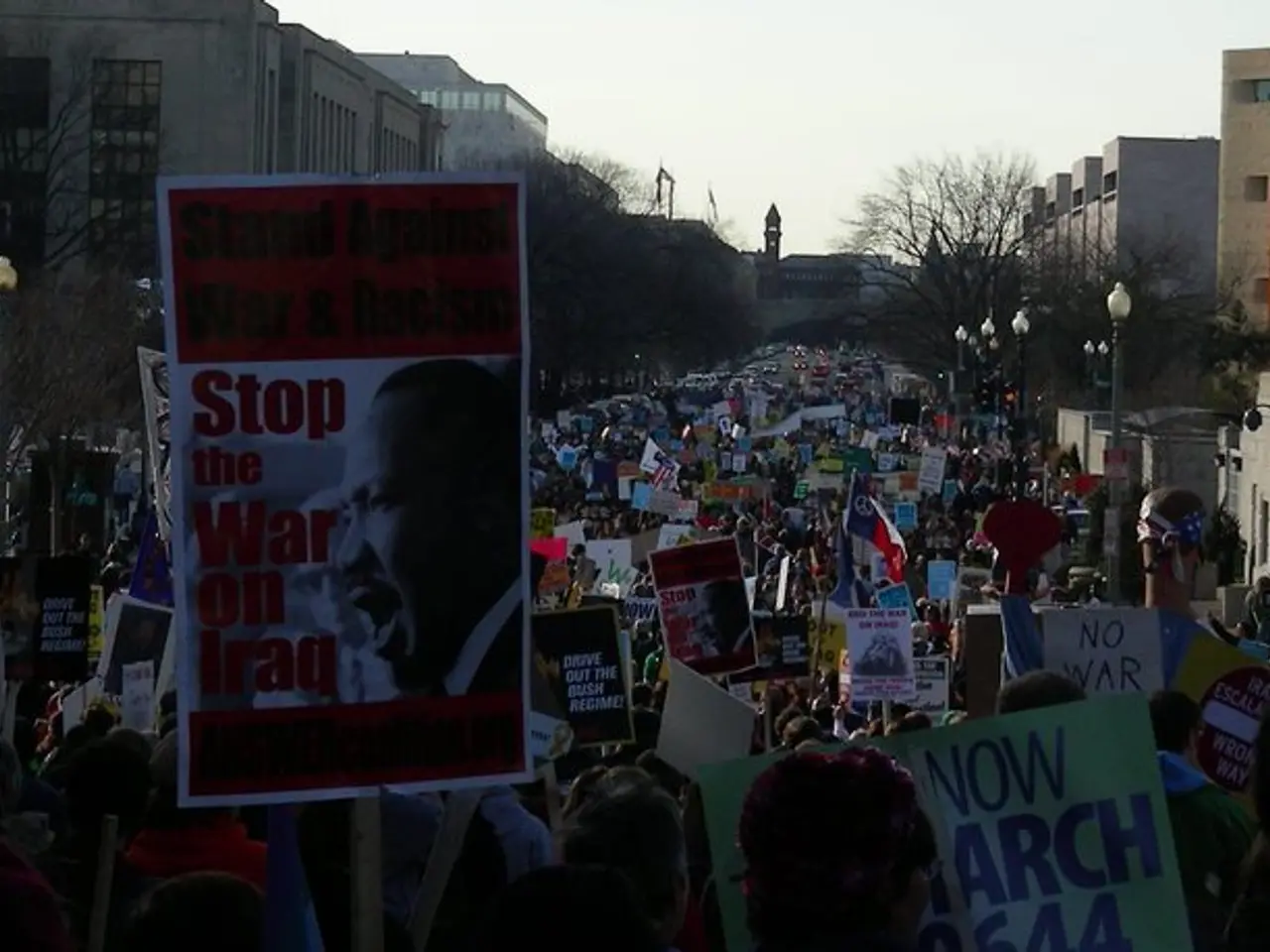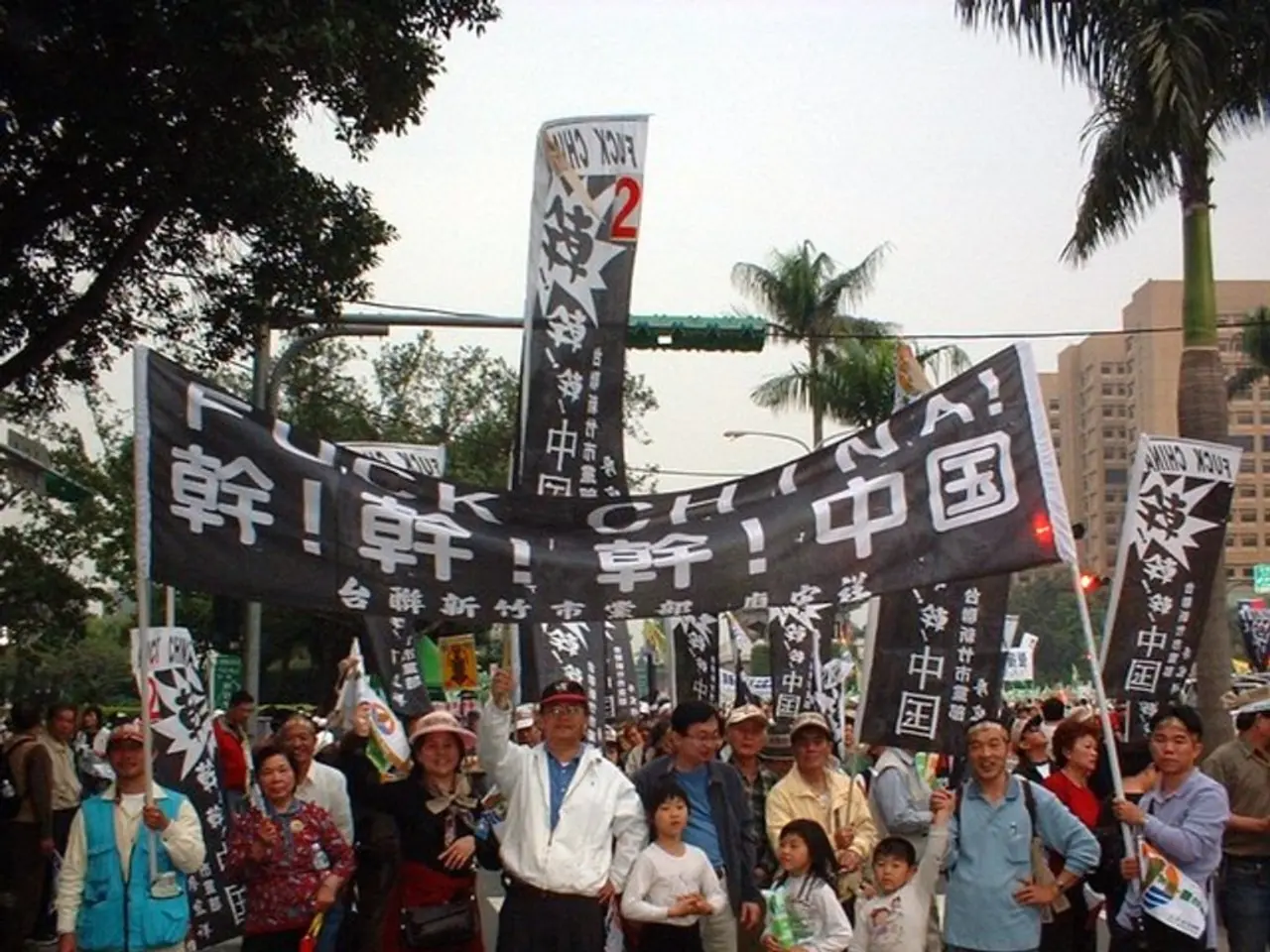U.S. Military Forces Remain Vulnerable to Iranian Attacks Despite Recent Struggles, According to Centcom's Potential Leader
In the complex landscape of the Middle East, tensions remain high as Iran continues to strengthen its military capabilities while facing challenges to its influence through proxy groups.
Vice Adm. Brad Cooper, the nominee to head U.S. Central Command, has highlighted the threat posed by Iran and its proxy groups in the region, with protecting American troops remaining the top priority. This concern was underscored by Iran's retaliation against the Al Udeid Air Base in Qatar, a brief volley of short- and medium-range missiles that were successfully intercepted by air defenses, causing no harm to Americans or Qataris.
Iran's military modernization programme, one of the fastest in the world, is focusing on advanced technologies such as hypersonic missiles, long-range drones, and cyber warfare. The aim is to reshape the regional military balance in Iran's favour, signalling that any attack would come at a high cost. However, Iran's proxy groups, including Hezbollah in Lebanon, aligned forces in Syria, and the Houthis in Yemen, have suffered significant setbacks due to sustained Israeli and U.S. pressure.
The U.S. military maintains a strong presence in the Persian Gulf region, with aircraft carriers and missile defense systems, to deter Iranian aggression. Recent U.S. strikes in June targeted key Iranian nuclear facilities, a move aimed at limiting Iran’s nuclear capabilities without seeking regime change but carrying risks of escalation.
In this fragile regional situation, marked by an ongoing arms race and proxy conflicts, Iran is attempting to compensate for the weakening impact of its proxy networks by upgrading its direct military capabilities. However, the U.S. and Israel continue active efforts to limit Iran’s regional military influence.
According to U.S. defense officials' assessment, Iran's own military is rapidly modernizing, with a focus on deterrence. Iranian proxy groups, on the other hand, are militarily and politically depleted, having suffered setbacks in Lebanon, Syria, and Yemen due to Israeli and U.S. strikes. Regional rivals, such as Israel, are superior in intelligence and air defense, actively degrading Iranian proxies. The U.S. military presence in the region is strong, with recent strikes on nuclear sites in Iran to curb its program.
The overall regional situation is tense and fragile, with the potential for escalation. This assessment indicates that Iran is striving to upgrade its direct military capabilities to compensate for the weakening impact of its proxy networks, while the U.S. and Israel continue active efforts to limit Iran’s regional military influence.
References: [1] U.S. defense assessments depict Iran as undergoing one of the fastest military modernization programs in the world. [2] Iran’s proxy groups in the Middle East, such as Hezbollah in Lebanon, aligned forces in Syria, and the Houthis in Yemen, have suffered significant setbacks recently. [3] The U.S. military maintains a strong presence in the Persian Gulf region, including aircraft carriers and missile defense systems, to deter Iranian aggression. Recent U.S. strikes in June 2025 targeted key Iranian nuclear facilities with advanced weapons, signaling increased military pressure on Tehran.
- The increasing use of advanced technologies such as long-range drones and hypersonic missiles by Iran's military modernization program is aimed at reshaping the regional military balance.
- In the face of Iran's military modernization, the U.S. military has stationed aircraft carriers and missile defense systems in the Persian Gulf region to deter Iranian aggression.
- Iran's proxy groups, like Hezbollah in Lebanon and the Houthis in Yemen, have suffered significant setbacks due to intense military pressure from the U.S. and Israel.
- In this volatile region marked by an ongoing arms race and proxy conflicts, political and military efforts are being made by the U.S. and Israel to limit Iran's regional military influence.
- The U.S. and Israel's military and intelligence superiority in the region is actively degrading Iranian proxies, forcing Iran to upgrade its direct military capabilities.
- The overall security situation remains tense, with the risk of escalation looming large, as Iran attempts to compensate for the weakening impact of its proxy networks through military modernization.




